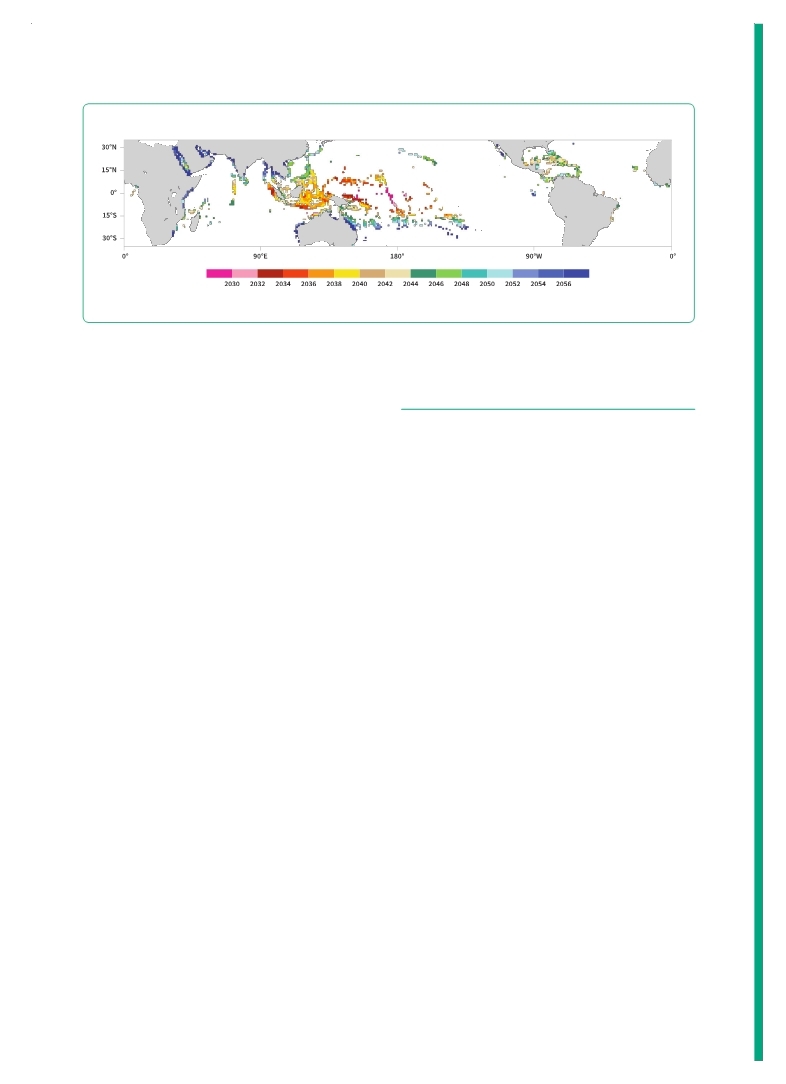 |
Global Assessment Report on Disaster Risk Reduction 2015
Making development sustainable: The future of disaster risk management |
 |
Global Assessment Report on Disaster Risk Reduction 2015
Making development sustainable: The future of disaster risk management |
|
|

244
Part III - Chapter 12
lost between 1930 and 2003 (Butchart et al., 2010
Butchart, S.H.M. et al. 2010,Global Biodiversity: Indicators of Recent Declines, Science, Vol. 328, No. 5982, pp. 1164-1168. doi: 10.1126/science.1187512.. . The destruction of planetary systems promises the ultimate kata-strophe. Under the most stark projections, the planet will have lost all its glaciers and have sterile oceans within just a few hundred years. There is no doubt that there will always be winners and losers in the shifting equations of overwhelmed planetary systems. But current assumptions regarding social and economic development and urbanization will hold little water. It is still unclear whether or not the plethora of local initiatives promoting green infrastructure, renewable energy, biodiversity restoration and other areas can gain traction quickly enough to change course. Even if it is too little, too late, these initiatives still provide hope. Ultimately, the key question is how to protect a planet that provides the basis for human and social wellbeing without simply protecting a paradigm that is currently destroying it.
Figure 12.14 Projections of coral reef decline
(Source: van Hooidonk et al., 2013.)
Notes
1 http://aosis.org/reports-fiji-latest-country-to-relocateclimate-refugees (accessed 11 January 2015).
2 World Bank data: http://data.worldbank.org. 3 There is some debate as to the definition of the exact values that constitute these planetary boundaries. Moreover, researchers are in agreement that not all boundaries apply globally, and instead it is local conditions that will define when critical thresholds have been reached. Moreover, there is some difficulty in interpreting the data for policymaking, and assigning arbitrary acceptable limits may create new risks (http://www.nature.com/nature/ journal/v461/n7263/full/461447b.html). Despite these caveats, the debate on planetary boundaries has been a useful dooropener to a more profound debate on unsustainable current consumption patterns. For more information on the discussion of planetary boundaries, see http://www.nature.com/news/ specials/planetaryboundaries/index.html. 4 http://www.unccd.int/en/about-the-convention/Pages/Aboutthe-Convention.aspx (accessed 11 January 2015). 5 http://www.ramsar.org/cda/en/ramsar-documents-textsconvention-on/main/ramsar/1-31-38%5E20671_4000_0__ 6 http://www.cbd.int/sp. 7 350 ppm has been identified as the limit if global warming is not to exceed 2°C, where ppm = parts per million, i.e. the ratio of the number of gas molecules to the total number of molecules of dry air. 8 http://co2now.org/Current-CO2/CO2-Now/noaa-mauna-loaco2-data.html. 9 The largest emitters since 1990 are (in order of magnitude) China, the United States of America, the Russian Federation, India and Japan (IEA, 2013 IEA (International Energy Agency). 2013,CO2 Emissions from fuel combustion, Highlights. IEA Statistics. Paris.. . |
 
Page 1Page 10Page 20Page 30Page 40Page 50Page 60Page 70Page 80Page 90Page 100Page 110Page 120Page 130Page 140Page 150Page 160Page 170Page 180Page 190Page 200Page 210Page 220Page 230Page 234Page 235Page 236Page 237Page 238Page 239Page 240Page 241Page 242Page 243Page 244Page 245->Page 246Page 247Page 248Page 249Page 250Page 251Page 252Page 253Page 254Page 255Page 256Page 257Page 258Page 260Page 270Page 280Page 290Page 300Page 310
|
|
 
|
 
|
